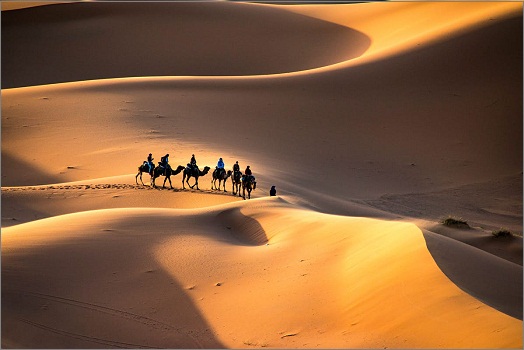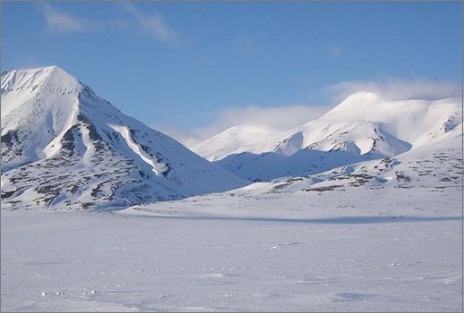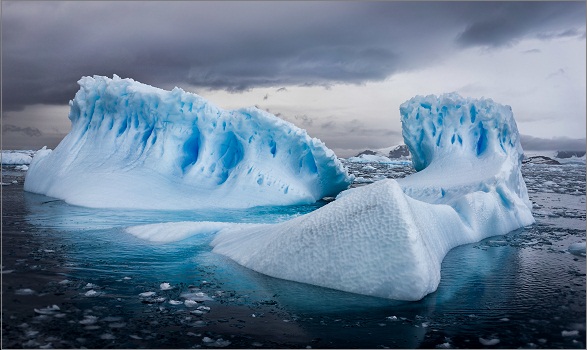5 Biggest Deserts in the World
by Devender
0 1676
A desert is a landscape or region that receives very little precipitation throughout the year. True deserts are those where nothing grows and these areas are absolutely barren. Around 1/5th of Earth's surface is covered with desert and they occur on all the Earth's continents.
Deserts can be further divided into 4 different types: the polar deserts, the subtropical deserts, cold winter deserts and cool coastal deserts. Here is a list of the top 5 largest deserts present on Earth.
5 Biggest Deserts in the World
5 Gobi Desert
- Type: Cold Winter
- Area: 500,000 square miles
- Location: China and Mongolia
- Type: Subtropical
- Area: 1 Million square miles
- Location: Saudi Arabia
- Type: Subtropical
- Area: 3.5 Million square miles
- Location: Algeria
- Type: Polar
- Area: 5.4 Million square miles
- Location: Canada
- Type: Polar
- Area: 5.5 Million square miles
- Location: Antarctica
The Gobi Desert is a large desert in East Asia covering parts of Northern, Northeastern China and Southern Mongolia. The Gobi is overall a cold desert where frost and snow occur occasionally on its dunes. However, the Gobi Desert climate is one of the extremes. Despite the harsh climate of the Gobi Desert, the Mongolian region supports wildlife and wildlands.
The terrain of the Gobi Desert is rocky and marked with sparse vegetation. The Desert seems to be expanding which is raising concerns in many quarters.
4 Arabian
The Arabian Desert is the largest desert in Asia stretching from Yemen to the Persian Gulf and Oman to Jordan and Iraq occupying most of the Arabian Peninsula. One of the largest continuous bodies of sand in the world is present at the centre of this desert known as Ar-Rub'al-Khali (The Empty Quarter). The climate is mostly dry and temperatures of the region oscillate between very high heat during daytime and seasonal freezing nights.
The Arabian Desert is naturally gifted with reserves of oil, natural gas, phosphates and sulfur. The biodiversity of this desert is very little, only a few endemic plants grow here.
3 Sahara

The Sahara Desert is the largest hot desert in the world covering around 31% of Africa. The name Sahara is derived from the Arabic word "sahra" which translates to Desert. Sahara is equipped with two climatic regimes: a dry subtropical climate in the north and a dry tropical climate in the south. The weather tends to be sunny, dry and stable with a minimal chance of rainfall.
It is the sunniest, driest and most rainless place on the planet. The annual average daily temperature exceeds 20 Degree C whereas it can approach 30 Degree C in the hottest regions. However, most of the part of the Sahara Desert has a value in excess of 25 Degree C.
2 Arctic
The Arctic is the second largest desert in the world. The region is covered with glaciers, snow and bare rock and the environment is harshly cold. The region has a Tundra climate characterized by long, cold winters and short summers. The average temperature throughout the year remains below freezing point except for one month in summers which brings melting of the snow and ice.

The vegetation in this region is very scarce due to the cold climate but some plants exist at the low elevation where bare rock or soil exists. In the Arctic region, the summer skies never darken because the midnight sun is always present whereas winters have permanent polar nights illuminated by the dancing flares of the Northern Lights.
1 Antarctic
Antarctica is the driest continent on the earth, it is almost entirely a desert. It receives very little snow or rainfall but it is so cold, that the precipitation received does not melt. The average annual temperature ranges from -10 Degree C on the coast whereas it is -60 Degree C at the highest parts of the interior.

Antarctic Desert is not only the largest desert on earth but also the driest and the coldest desert on the planet. It is covered with permanent ice sheets that contain 90% of the earth's fresh water.
This single desert is larger than the combined size of the 3rd, 4th and 5th desert in the list. The Antarctic Desert also experiences extreme high-speed winds making the Antarctica continent, the windiest continent.
Deserts are far more than the desolate landscape we often picture them as and to understand them more, you can click here! This is the list of 5 Largest Deserts in the world.
All the social media and coding tag website content are only for educational purposes and all the names and logos are property of these respected brands. The information we provide in this blog is best to our knowledge and according to publicly available data. Coding Tag is not liable for any discrepancy in the data.

Share:







Comments
Waiting for your comments